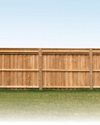
More than any other type of home improvement job, plumbing can drive a DIYer crazy. Problems arise, projects grow, frustrations multiply. Even pros are not immune. But one way to manage the frustrations and complete a successful plumbing project is to allow plenty of time at least twice as much time as you think the project should take. Another smart step is to learn some tricks of the trade. Here are a few of our favorites.
CHOOSE CAULK, NOT PUTTY
Despite the name, lots of plumbers never use plumber's putty. It damages some types of plastic, and it stains surfaces such as natural stone. Plus, it tends to dry out, crack and allow leaks. Silicone caulk is a safer, longer-lasting sealant in most areas where you might use plumber's putty.
DON'T REUSE SUPPLY LINES
When you're replacing a toilet or a faucet, you could save 10 bucks by reusing the old flexible supply lines-but don't. Plastic degrades over time, and even a small leak can lead to catastrophic water damage. It's a small risk, but not one worth taking. Buy new lines that are encased in braided stainless steel; they're much less likely to burst. If you already have braided lines but they're several years old, replace them.
CUT STUBBORN PARTS
Corrosion and mineral deposits have an amazing power to lock parts together, making parts almost impossible to disconnect. Often the best solution is to cut a stubborn part. Either slice it off or cut kerfs in the part so you can break it off. A hacksaw blade works well. Oscillating or rotary tools work even better.
DON'T OVERTIGHTEN SUPPLY LINES
This story is from the {{IssueName}} edition of {{MagazineName}}.
Start your 7-day Magzter GOLD free trial to access thousands of curated premium stories, and 9,000+ magazines and newspapers.
Already a subscriber ? Sign In
This story is from the {{IssueName}} edition of {{MagazineName}}.
Start your 7-day Magzter GOLD free trial to access thousands of curated premium stories, and 9,000+ magazines and newspapers.
Already a subscriber? Sign In

7 Bicycle Maintenance Tips
Keep your bike in tiptop shape and ride safe!

SETTING FENCE POSTS WITH EXPANDING FOAM
Any fence builder knows you need strong posts for a strong fence, and that means backfilling the postholes with a dense, hard material other than dirt.

PEBBLE MOSAIC STEPPING STONES
COLLECT SOME RIVER ROCK AND MAKE YOUR OWN UNIQUE STEPPINGSTONE PATH

EARTH-FRIENDLY WEED KILLERS
HEALTHIER CHOICES FOR HUMANS AND THE ENVIRONMENT

DIY! HYDROPONIC GARDEN
FRESH VEGETABLES AT YOUR FINGERTIPS

GROW MINI VEGETABLES
GROW A GARDEN IN A TINY SPACE!

BUILD A VERTICAL GARDEN
TIME TO GROW UP!

MODERN WATER FOUNTAINS
A SPLASH OF PEACE FOR YOUR PATIO

9 ALTERNATIVE USES FOR SAWDUST
Every fully stocked wood shop has a table saw. You can usually find a pile of sawdust under it, even if it's used only occasionally. If a shop has a belt sander or band saw, there's probably another pile of finer sawdust under that. Even people without stationary tools have sawdust accumulation on their workbenches.

INSULATE WITH FOAM
IT'S A GREAT ALTERNATIVE TO FIBERGLASS